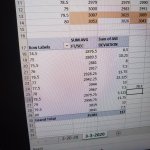Trying to find the best place to post this question. Recently on my 6ARC gasser, when sizing, about 30% of the cases are extremely difficult and result in the brass being, lack of a better word, skinned just about the case head. The result is a 6ARC that looks like it has a belt. I have not narrowed down wether this is just from the factory ammo or my 1x/2x brass, but have not had this issue when resizing Hornady 6.5G 1x fired to 6ARC.
Again, this is not apparent after firing, only when sizing operation occurs. I know Johnnys Reloading Bench posted a video about it, mine is similar. Just after sizing not firing.
I have been annealing hill billy style with a drill and a torch, so maybe my annealing is off? I’m going to try some without and see what the result is. I figured I’d ask all you smart fellers on here to get some help.
Also, 6ARC is a hammer and I love that thing. If there is a specific load thread and someone knows where it is, please post or message it to me.
Again, sorry if this is the wrong thread for this.
View attachment 7859780View attachment 7859781











